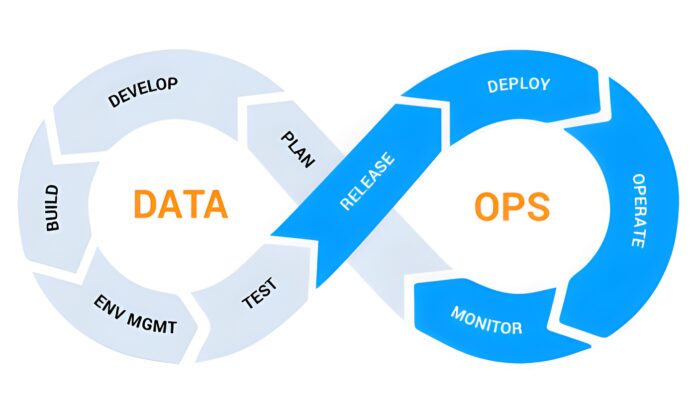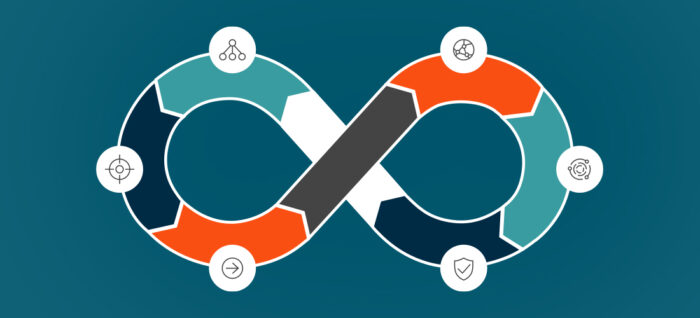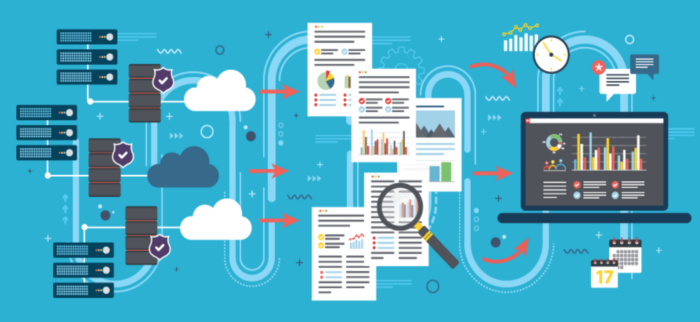[ad_1]


In right now’s fast-paced enterprise atmosphere, organizations are beneath rising strain to ship insights and worth from their information shortly and effectively. Conventional Extract, Rework, Load (ETL) processes, typically characterised by lengthy improvement cycles and guide interventions, are not adequate to fulfill the calls for of contemporary data-driven organizations.
Enter DataOps – a strategy that applies rules from DevOps to information administration, with a deal with streamlining ETL processes for agile information supply. On this article, we’ll discover the rise of DataOps and its position in reworking ETL processes to allow agile information supply. Moreover, we’ll look at how workflows by revolutionary Visible Circulate platform.
Understanding DataOps


DataOps is a collaborative and agile strategy to managing the complete information lifecycle, encompassing every part from information acquisition and integration to evaluation and supply. Impressed by the rules of DevOps, DataOps brings a brand new paradigm to information administration by emphasizing collaboration, automation, and steady supply.
By fostering a tradition of collaboration, DataOps breaks down silos between information engineers, information scientists, analysts, and enterprise stakeholders, guaranteeing that each one events work collectively seamlessly in the direction of frequent targets.
Key Rules of DataOps
DataOps is guided by a number of key rules that differentiate it from conventional information administration approaches:
- Collaboration: DataOps promotes collaboration and communication between cross-functional groups, together with information engineers, information scientists, analysts, and enterprise stakeholders. By breaking down silos and fostering collaboration, DataOps allows sooner decision-making and alignment of enterprise goals.
- Automation: Automation is on the coronary heart of DataOps, enabling organizations to automate repetitive duties, equivalent to information ingestion, transformation, and deployment. By automating guide processes, DataOps reduces errors, accelerates supply, and improves effectivity.
- Steady Supply: DataOps emphasizes steady supply, enabling organizations to ship insights and worth from information in a well timed and iterative method. By adopting steady integration and deployment practices, organizations can shorten improvement cycles and reply shortly to altering enterprise necessities.
Streamlining ETL Processes with DataOps


DataOps transforms ETL processes by making use of its rules of collaboration, automation, and steady supply:
- Collaboration: DataOps encourages collaboration between information engineers, information scientists, and enterprise stakeholders all through the ETL course of. By involving stakeholders early within the course of and soliciting suggestions iteratively, DataOps ensures that ETL workflows meet enterprise necessities and ship actionable insights.
- Automation: Automation performs a vital position in streamlining ETL processes in DataOps. Organizations leverage automation instruments and platforms to automate information ingestion, transformation, and deployment, decreasing guide effort and accelerating time-to-insight. Automated testing and monitoring guarantee information high quality and reliability all through the method.
- Steady Supply: DataOps allows steady supply of insights by adopting practices equivalent to steady integration, steady deployment, and steady monitoring. By breaking down ETL workflows into small, manageable duties and delivering worth iteratively, organizations can reply shortly to altering enterprise wants and ship insights sooner.
Advantages of DataOps for ETL Processes


The adoption of DataOps brings a number of advantages to ETL processes:
- Quicker Time-to-Perception: By streamlining ETL processes and adopting agile practices, DataOps allows organizations to ship insights and worth from information sooner, accelerating time-to-insight and decision-making.
- Improved Collaboration: DataOps fosters collaboration between cross-functional groups, enabling higher alignment of enterprise goals and information initiatives. By breaking down silos and fostering communication, DataOps promotes a tradition of collaboration and innovation.
- Elevated Effectivity: Automation reduces guide effort and accelerates ETL processes, enhancing effectivity and productiveness. By automating repetitive duties, DataOps frees up helpful assets to deal with higher-value actions, equivalent to information evaluation and innovation.
The Function of Expertise in Enabling DataOps
Expertise performs a pivotal position within the profitable implementation of DataOps. With the appearance of superior information administration platforms and instruments, organizations can extra simply undertake rules and practices. These applied sciences facilitate automation, collaboration, and steady supply, making it potential to streamline ETL processes and speed up time-to-insight.
One key know-how is information orchestration platforms, which allow the seamless integration and coordination of assorted information sources and workflows. These platforms present a unified interface for managing ETL processes, permitting groups to observe and management information pipelines effectively.
Moreover, they typically include built-in automation capabilities that scale back the necessity for guide intervention, guaranteeing that information is processed and delivered in a well timed method.
One other essential know-how is containerization, which permits information groups to bundle and deploy their purposes and dependencies constantly throughout totally different environments. By utilizing containerization instruments equivalent to Docker and Kubernetes, organizations can be certain that their ETL processes are scalable and resilient.
This strategy additionally helps steady integration and steady deployment (CI/CD) practices, enabling fast updates and iterations with out disrupting ongoing operations.
Challenges and Greatest Practices in Implementing DataOps


Whereas DataOps affords quite a few advantages, implementing it successfully can pose a number of challenges. Organizations should navigate these challenges to completely notice the potential of DataOps and streamline their ETL processes.
One main problem is cultural resistance. Transitioning to a DataOps strategy requires a cultural shift throughout the group, emphasizing collaboration, transparency, and steady enchancment. Groups which can be accustomed to conventional information administration practices could resist these adjustments.
To beat this problem, organizations ought to foster a tradition of collaboration and innovation, encouraging cross-functional groups to work collectively in the direction of frequent targets. Management assist and clear communication of the advantages of DataOps are essential in driving this cultural transformation.
One other problem is managing the complexity of information environments. Trendy information ecosystems typically contain a mess of information sources, codecs, and platforms, making it troublesome to determine seamless integration and coordination.
To deal with this complexity, organizations ought to undertake strong information governance practices and leverage information orchestration instruments that present complete visibility and management over information pipelines. Guaranteeing information high quality and consistency throughout the complete information lifecycle is crucial for the success of initiatives.
Conclusion
The rise of DataOps is reworking ETL processes, enabling organizations to streamline information operations and ship insights and worth from information sooner and extra effectively. By making use of rules of collaboration, automation, and steady supply, DataOps revolutionizes ETL workflows, making them extra agile, scalable, and aware of enterprise wants.
With DataOps, organizations can unlock the complete potential of their information property and drive innovation and progress in right now’s data-driven world, in the end gaining a aggressive edge and adapting swiftly to market adjustments and buyer calls for.
[ad_2]




